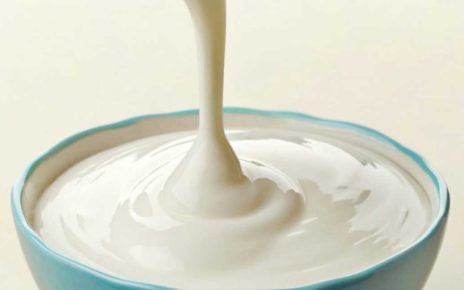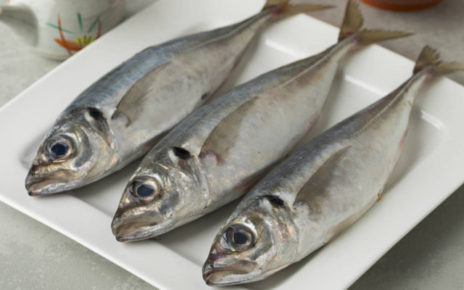As temperatures continue to climb, consumers are looking for new ways to enjoy ice cream and frozen desserts throughout the summer. According to Swiss chocolate manufacturer Barry Callebaut, Ruby chocolate, the “fourth type of chocolate,” opens new taste horizons for ice cream manufacturers with plentiful opportunities for applications. Meanwhile, July marks National Ice Cream Month in the US which coincides with months of global lockdowns and travel restrictions which has led to increased sales and consumption of ice cream and frozen desserts in general.
John Pimpo, Market Segment Manager for Ice Cream at Barry Callebaut, says the ice cream category has grown 20 percent over the past few months. “The data shows that consumers are nesting during COVID-19 and stocking their freezers with comfort food. With people staying at home more, we see the increased purchase and consumption of ice cream. Consumers are craving a feeling of togetherness, unity and less division. Dessert is a way to bring the family together, share quality time and create special memories. Ice cream has the power to do that,” he tells FoodIngredientsFirst.
The rise of Ruby
He also flags nostalgic flavors being reborn, premium, “elevated” ingredients and exciting flavor pairings. “For example, instead of a strawberry ice cream bar, we expect to see more Ruby chocolate-coated ice cream bars,” he notes. “Consumers will be looking for familiarity and we will continue to see indulgence, but it will be ‘permissible indulgence.’”
“There is a significant opportunity for Ruby in the frozen dessert segment,” Pimbi urges. “We have already seen Ruby’s success in coatings for bars and cones, but there are many other applications for Ruby,” he states.
First, Ruby is in ice cream as a flaked chip, but it can also continue to be used as a coating for bon-bon type, one-bite desserts, or in or around ice cream sandwiches or simply as a decoration or drizzle. Barry Callebaut chefs have worked on pairing options for Ruby to see which flavors match best.
“Ruby is naturally fruity, so it pairs well with berries but also with other fruits like citrus. Other pairings include nuts, spices, spirits and texture marriages with crunchy elements and seeds,” he asserts.
“Ruby ice cream coating is a game-changer for the ice cream market,” declares Martin Diez, a chef at Barry Callebaut. “The texture of Ruby allows you to taste all of its unique flavors and nuts like pistachios, which create a colorful green and pink composition perfect for a summertime treat.”
Nostalgia comes to the fore amid pandemic
Tracy Snider, Marketing Director for Human Nutrition & Health at Balchem, a US-based ingredients company, adds that “Ruby chocolate will find its way to everyone’s taste buds.”
“There are many opportunities for Ruby chocolate in ice cream and frozen desserts, but also in bakery and confection applications,” she tells FoodIngredientsFirst. “We are excited about our Ruby Chocolate Cherry Ice Cream concept that integrates the newest chocolate to bring forward a luxurious pink ice cream with a black cherry variegate and chocolate hearts targeting limited-time offering launches for Valentine’s Day 2021.” Balchem is also celebrating National Ice Cream Month by tasting and perfecting all of the flavors coming forward for 2021, adds Snider.
Eating habits during COVID-19 have notably been heading towards comfort and nostalgia. “With everyone at home, it has created more time to indulge and unwind,” continues Snider. “This creates a huge opportunity for innovation while staying true to those nostalgic flavor profiles. Consumers want something they know will taste good and appreciate the flavors of the past now more than ever. Nostalgia is a driving force when it comes to the current ice cream flavors since it is reminiscent of past good times,” she details. There has been a surge in all things creature comfort and since the reality of self-isolating and quarantining during the COVID pandemic hit home.
New tastes and textures expected
Balchem has been busy during the pandemic applying insights to its Feature Flavors concept development for 2021. The next phase of Feature Flavors is coming for dairy and ice cream manufacturers to get a jump start in 2021. “We’ve been analyzing data to pinpoint just the right flavor and texture combos to equip industry to bring out some of the most fun flavors yet,” adds Snider.
“We are aiming to bring new textures in flavor combinations that ‘wow’ the senses. Our popping variegate is a sensory kick and can be used as a coating, topping or a swirl. It’s my personal favorite at the moment and is featured in our Red, White & Blue Feature Flavor that is sure to be a summer favorite,” she explains. Balchem is also fine-tuning its Feature Flavors launch for this fall and playing with new flavor combinations and textures that the company will be highlighting in the next few months.
Furthermore, Pimbo flags how Barry Callebaut will “always lean toward indulgence first when it comes to frozen dessert development.” From research, Barry Callebaut has learned that consumers are looking for other alternatives, specifically non-dairy, in the freezer aisle.
“Non-dairy NPD is a huge opportunity for us, given our chocolate and nut butter capabilities. We can make a variety of nut butter bases for the making of non-dairy frozen desserts. We also can make nut butter-based variegates [swirls that go through the product], and textured nut butter-based variegates with roasted, toasted nuts,” he elaborates.
There is a notable percentage of consumers pivoting away from dairy due to dietary restrictions or lifestyle choices. Barry Callebaut is ramping up to meet this need with a variety of bases, inclusions and flavor concepts, Pimbo says.
Finally, Barry Callebaut has previously identified six trends that it expects to see in ice cream innovation for this year and beyond. “These include a surge toward a ‘Health Halo’ of flavor concepts, more texture-based flavors, non-dairy development, a slant toward adult flavors or alcohol-based flavors, deconstruction of classic desserts turned into ice cream flavors, and a shift to the ‘Dark Side’ with black ice cream,” Pimbo explains.
“We see similar trends on the other continents as we see here in the US – there are varying flavors for each region. It seems like the countries that have been hit harder financially are looking for simpler innovations and not necessarily non-dairy. We also see this ‘Deconstruction’ concept taking off in many countries where the local traditional desserts can now be broken down into new indulgent ice cream flavors,” he continues.
In terms of eating lifestyles and product solutions for the current marketplace, Pimbo says consumers may be realizing that staying at home may have translated into COVID-19 “pounds,” they will be looking to clean up their eating habits by turning to new lifestyle eating choices such as keto, paleo and less dairy.
“We are ready for this influx of customers, with plant-based chocolate inclusion product solutions. We see additional concepts emerging with consumers wanting to eat healthier and boost their immune systems through probiotics and other nutrients, even through ice cream and dessert NPD,” he concludes.
Source: Food Ingredients First










